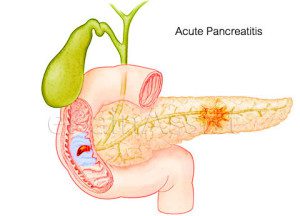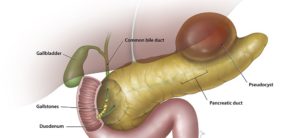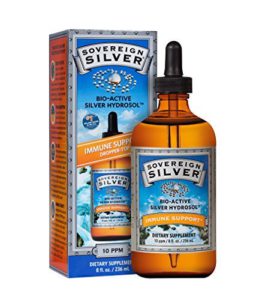 What’s the role of h. pylori in pancreatitis? If you are looking for information regarding the roll of H. Pylori in pancreatitis you can rest assured you have found the right site and article.
What’s the role of h. pylori in pancreatitis? If you are looking for information regarding the roll of H. Pylori in pancreatitis you can rest assured you have found the right site and article.
I have often stated, in response to questions about undiscovered causes of pancreatitis, that there is ALWAYS a cause for pancreatic inflammation. I believe that idiopathic pancreatitis is simply a “knee-jerk” diagnosis made by inferior doctors who simply don’t know the cause and/or are too lazy or worried about time and money to focus on finding why a patient is sick.
What IS H. Pylori?
H. pylori or Helicobacter pylori is a type of bacteria that may play a role in pancreatic diseases such as acute pancreatitis and pancreatic cancer. It (H. pylori) is common and can enter your body living in your digestive tract for years. And these germs can cause ulcers, gastritis, stomach cancer and general illness. Watch this video so you can learn about it.
Helicobacter Pylori Symptoms
Many people who are infected with H. pylori bacteria will show or feel no signs or symptoms. Nobody seems to know why this is true but guess it may be because some folks are born with with more resistance to the harmful effects of H.pylori. In those that do exhibit signs and symptoms they may include:
1) Abdominal pain, an ache or burning pain in the abdomen or lower esophagus.
2) The abdominal pain is or seems worse when the stomach is empty.
3) Loss of appetite
4) Nausea that may or may not lead to vomiting
5) Gas with Bloating
6) Burping or belching
7) Unintentional weight loss
It may be prudent to make an appointment with your doctor and get checked out, especially if any of the symptoms worry you. Seek immediate medical help should you experience:
1) Severe or persistent abdominal pain
2) Difficulty swallowing
3) Bloody or black tarry stools
4) Bloody or black vomit or vomit that looks like coffee grounds
What Is The Role of H.Pylori In Pancreatitis
 A lady I’ll call Mary contacted me regarding her husband who suffers from pancreatitis and mentioned something that triggered Deja Vu and I shared some stuff with her. That “something” she mentioned was H. pylori.
A lady I’ll call Mary contacted me regarding her husband who suffers from pancreatitis and mentioned something that triggered Deja Vu and I shared some stuff with her. That “something” she mentioned was H. pylori.
Mary dug deeper and found an interesting article. You should read it because H. pylori looks to be an acute pancreatitis trigger. H. pylori is common and a blood test is all it takes to determine if you are colonized.
I did some more research since Mary peaked my interest and here is another article voicing similar views and providing more in-depth info regarding H. pylori’s role in AP, CP and AIP.
Treatment for H. Pylori
What this all means in a simple nutshell is that H. pylori is probably a cause for acute pancreatitis and other pancreas and intestinal issues. And if you have it, it can be killed with two (2) antibiotics and bismuth in combination. That “triple therapy” often comes with side effects and is NOT always successful.
From what I have read about the bacteria it seems difficult to kill and keep dead. One of the reasons may be that if you have it, your family members probably have it as well. So the drugs eradicate it in you but you are soon infected again by other members of your family unless they are also treated and to be the most successful I would guess treatment should happen simultaneously. Even then there is no guarantee that you’ll not be infected again because you may again become infected by swapping bacteria with someone else who is infected.
IF you wish to avoid the side effects of traditional medicine make sure you understand that H. pylori causes gastric cancer, possibly esophageal cancer and maybe pancreatic cancer. It also causes ulcers and ulcers can perforate the intestines etc causing serious complications. With that said …
 I Have been diagnosed with H. Pylori. I was going to do the triple therapy but was talked out of it. I looked for an alternative therapy, something that would kill it dead. What I came up with is colloidal silver. Colloidal silver is interesting stuff. It kills bacteria, viruses (which antibiotics do not do), parasites and nothing seems to become immune to it. IF you don’t believe me I understand. IF it sounds to good to be true it likely is, isn’t it?
I Have been diagnosed with H. Pylori. I was going to do the triple therapy but was talked out of it. I looked for an alternative therapy, something that would kill it dead. What I came up with is colloidal silver. Colloidal silver is interesting stuff. It kills bacteria, viruses (which antibiotics do not do), parasites and nothing seems to become immune to it. IF you don’t believe me I understand. IF it sounds to good to be true it likely is, isn’t it?
All you have to do is to do a qualified search. In doing so you will find that the CDC recommends only TWO (2) disinfectants to kill the Norovirus, which causes horrendous stomach flu. Those two items are bleach and silver in solution. It is suspected of killing almost any bacteria, virus or parasite it touches yet does NOT harm normal healthy human cells.
Unfortunately there is a dark side, no pun intended. Too much colloidal silver can turn you bluish-gray forever (argyria or argyrosis). So it isn’t something you want to use in high doses for more than a few days or even small doses for any long period of time.
I use colloidal silver. Read this sites “terms of service.” I use it to kill almost anything that makes me sick that can be killed. For H. Pylori I recommend the highest recommended dose on the package ALL in ONE SHOT and on an empty stomach. I also do it more than recommended but doing what I do is entirely up to you and if you turn blue, die, or have any weird reaction it is ON YOU because YOU DO EVERYTHING AT YOUR OWN RISK. I do this dose twice daily for 3 days and quit. It usually stops all the symptoms and kills the bacteria. It doesn’t always stay gone. I have had to do it more than once over the last few years since being diagnosed. I may have to dose myself three times daily for a week in order to achieve total eradication. Quite frankly I am somewhat apprehensive about the possibility of turning a bluish gray. I really don’t wish to look like an unhealthy smurf forever 🙂
When you say to take the highest dose on the package do you mean for the whole day? So it says 1 tsp 3 times a day, I should take 3 tsp?
Hi Rachelle – I can only tell you what I do – It takes the maximum dose of colloidal silver 2-3 times daily for a few days to kill the bacteria. Pepto Bismol helps kill it too. The two together should be quit good. I use a gluten free antacid first then follow with the silver. Seems to work. Unfortunately it is easy to get from others so there is no guarantee that you’ll never get it again.
Ok. Thank you. More specifically, do I take the maximum dose (3tsp) at a time 2-3x a day? I can live with getting it again if I know how to get rid of it! If this works it is so much better than antibiotics.
Hi Rachelle – That is what I do. I do 15-20 dropperfulls which is 3-4 tsp 2-3 times daily for several days. I am leery of doing more because silver has one bad side effect if you get too much – it can turn you a blueish gray and it’s permanent. So far I am not bluish gray 🙂